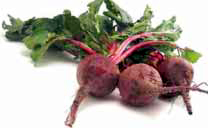 Here are two of my favourite dips to make with Greek yoghurt on a summers day. The beetroot dip was shown to me by a Russian, it contains a hefty amount of raw garlic for such a small dish but he insisted this was how it was made in Georgia. The garlic fest. adds a hot tang to the earthy flavour of the beets, yum.
Here are two of my favourite dips to make with Greek yoghurt on a summers day. The beetroot dip was shown to me by a Russian, it contains a hefty amount of raw garlic for such a small dish but he insisted this was how it was made in Georgia. The garlic fest. adds a hot tang to the earthy flavour of the beets, yum.
The aubergine dip is traditionally made by searing a plump, fresh aubergine over flame to give it a smoky flavour. When made like this (rather than in a conventional oven) I would not add the Greek yoghurt but leave the vegetable to star. This has always been known in our household as “poor man’s caviar.”
Beetroot Dip
4 medium beets, stalks and root removed, scrubbed thoroughly
6 large garlic cloves, peeled and chopped finely
6 heaped tbsp Greek yoghurt
1/2tsp salt or to your taste
sprinkle of paprika
Steam the beetroot for about 30-40mins or until soft enough for a knife to cut through with ease. On no account boil them or you will lose the fabulous colour. Mash the beets or use a food processor, mix in the other ingredients and serve with tortilla chips.
1 large aubergine/egg plant
1 lemon , juice of
3 tbsp heaped Greek yoghurt
2 tbsp chopped flat leaf-parsley or mint leaves
salt to taste
Prick the aubergine with a fork and bake in a fairly hot oven for about an hour until the skin is crisp, or better still barbecue it and scorch the skin.
Scoop out the soft flesh, chop with a knife then mash with a potato masher. Squeeze in the lemon juice, stir in the yoghurt. Add the chopped herbs and serve. Excellent on toast or eaten with crisp flat bread.







